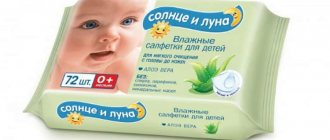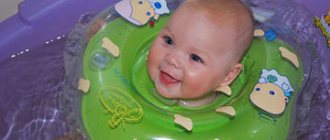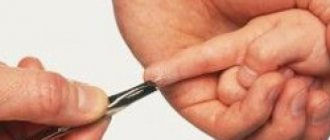The most difficult days for a mother will be those she spends with her baby in the maternity hospital. The child finds himself in a new world, where there are many unfamiliar viruses and microbes. From the first minutes, the baby will have to learn to breathe and then eat. To quickly adapt, it is necessary to provide regular and timely care for the newborn in the maternity hospital. The first hours are spent in the delivery room, where the obstetrician cuts the umbilical cord, clamping the remainder with a special clamp. Nurses clear mucus from the airways and drop gonococcus drops into the eyes. If specialized medical procedures are not required, the newborn is then placed on the mother's breast. It is on the first day that colostrum is produced - the most useful and valuable for the baby. The more often you breastfeed, the sooner your milk will appear.
In the first 24 hours, care for the newborn after birth is carried out by medical staff. We are talking about washing your hair under running water with baby soap, as well as washing off the vernix lubrication from the skin with oil. Primary treatment is aimed at eliminating the most complex contaminants, and further procedures are carried out daily by the mother in tandem with a nurse and independently.
It is advisable to stock up on all the accessories and supplies for the maternity hospital in advance: you will have to devote enough time and effort to caring for a newborn baby, and to make it easier, you should choose the appropriate products. You will definitely need diapers, clothes, HARTMANN® baby diapers, wet wipes and cosmetic cotton swabs with discs, lotions and oils with cleansing and protective properties.
Doctors and nurses are the first people you meet
It is the doctors and nurses in the maternity hospital who are the first to take on all the concerns of maintaining the health and caring for their little patients. This part of babies’ lives remains hidden from the eyes of parents, even in maternity hospitals, where babies and their mothers stay together. Many of us have a very vague idea of what happens to babies after their formal presentation to their mother. But most people are probably concerned about this issue. Let's try to lift the veil on this “secret life.”
Thermal care
The first thing a baby who has just been born needs is warmth. Compared to the mother's comfortable warmth, the surrounding world of the delivery room is quite cool. Therefore, the task of doctors is to prevent heat loss: babies in the maternity hospital immediately after birth are wiped dry with a diaper and placed on a table with a special lamp, where the baby’s temperature is constantly monitored.
But first, at the mother’s feet, immediately after birth, and sometimes at the moment when the head is just born, the baby’s mucus and amniotic fluid are carefully removed from the nose and mouth to make it easier for him to take his first breath. Immediately after birth, the midwife clamps and cuts the umbilical cord. From this moment your baby begins an “independent” life. Then special drops (most often a solution of albucid) are instilled into the child's eyes to prevent eye infections, in particular blenorrhea, which develops if the mother has gonorrhea. This preventive procedure is performed on absolutely all children, since the woman does not always know about the disease. Girls' genitals are also treated. In addition, the child’s cord blood type and Rh factor are immediately determined.
Why are boys' hygiene rules special?
Special requirements for how to wash a newborn boy are related to the structural features of the body. The boy's genitals are reliably protected - the foreskin fits tightly to the head of the penis. This is how the body protects the delicate area from bacteria. Hence, the main principle of proper care for parents who want to figure out how to carry out the procedure of washing a boy is to protect the body’s defense system. The foreskin of newborn boys does not need to be pulled back to achieve perfect cleanliness. External washing is sufficient.
How to wash a newborn boy?
Remembering the process of washing a newborn boy is not difficult. Before you start washing:
- Wash your hands thoroughly.
- Check the water temperature. Babies react to temperature differently, but pediatricians recommend heating water to 35-37 degrees. Choose the method that you find more comfortable. You can measure the temperature with a special thermometer; it is also useful for preparing a bath for swimming. If you immediately purchase a thermometer in the form of a toy, you will get excellent entertainment for your baby during water procedures. But if you don’t have a thermometer yet, you can use the “elbow method” and check for yourself whether it’s too hot.
Then follow 5 simple steps.
Place the boy on his arm bent at the elbow, tummy down, turn his back to the sink - so that the water flows from the tailbone to the navel.
First, wash the newborn's bottom, then the intimate area. Wash off dirt with stroking movements. Be gentle and gentle to avoid redness and cracking. There is no need to vigorously scrub the skin with your hand or sponge. Do not try to pull back the foreskin of the penis and lather the skin on the inside. Such actions can injure delicate skin.
Dry your clean butt with a soft towel. Just get wet - it is important to protect the baby's thin skin.
Leave the boy without a diaper for 5-10 minutes to allow any remaining moisture to dry naturally. Taking air baths several times a day is a very healthy habit.
Apply diaper cream or cream powder (depending on the baby's skin characteristics). Carefully treat the groin folds, allow the product to be completely absorbed.
What to do if you do find dirt under the foreskin? Do not panic! During the process of growth (from 1 month to 3 years), the foreskin separates from the head of the penis and becomes mobile. Individual cells die both inside and outside the penis. The body cannot get rid of them right away: some cells remain and form “infant smegma” - white flakes or tiny clumps. Don't try to squeeze them out. There is no threat from such “pollution”; they will gradually disappear on their own.
First examination in the maternity hospital
The first examination of the child occurs immediately after his birth. The doctor assesses the child’s general condition, his breathing, heartbeat, skin color, determines visible defects, including assessing the condition of the hip joints (and makes the first preliminary diagnosis of the potential risk of hip dysplasia in a newborn) and clavicles, the pathology of which is most common. The doctor pays special attention to the baby’s cry. Just by his intonation you can tell a lot about the general condition of the child.
Subsequently, a doctor and nurse examine the baby every morning while he is in the hospital. The baby is weighed at the same time every day, and before discharge, a control weighing is usually carried out - before and after feeding to find out whether the baby is eating enough. In addition, the nurse in the maternity hospital regularly treats the umbilical wound with hydrogen peroxide and potassium permanganate.
How to wash a newborn under the tap?
Some pediatricians consider it necessary to bathe a newborn exclusively in boiled, filtered water to minimize the risk of developing skin diseases. Modern pediatric doctors have refuted this theory, proving in practice that washing babies under the tap is not only safe for the child, but also much easier for the parent.
girl
While washing under the tap, the girl is placed with her stomach up on the forearm of one of the parent’s arms so that the baby’s head is on the adult’s elbow. During hygiene procedures, the direction of movement of the mother's or father's hands should be strictly front-to-back.
boy
It is also recommended to wash newborn boys from front to back, paying special attention to the child’s inguinal folds. During hygiene procedures under the tap, the baby should be placed on the lower part of one of the parent’s arms so that the child’s back is on top.
First ever report card
If you think that it is too early to get grades for your baby, then you are mistaken. The baby will receive its first assessment immediately after birth using the so-called Apgar scale, which allows you to quickly assess the initial state of the child’s health. This scale was developed in 1952 by American anesthesiologist Dr. Virginia Apgar for junior medical staff, who could quickly determine which child needed more attention. The baby is scored on this scale at the end of the first minute after birth and then at the end of the fifth minute. They comprehensively assess the state of muscle tone, reaction to irritation, skin color, breathing rate and heartbeat.
A little later, thanks to the resourcefulness of pediatrician Joseph Butterfield, the name “APGAR” became a kind of abbreviation for English-speaking specialists:
- Appearance - appearance (skin color);
- Pulse (Heart Rate) — the child’s pulse (heart rate);
- Grimace (Response to Stimulation) - a grimace that occurs in response to irritation;
- Activity (Muscle Tone) - activity of movements, muscle tone;
- Respiration - breathing movements.
Until recently, assessing the condition of a newborn child in a maternity hospital using the Apgar scale was a guide for further actions for medical staff. Currently, the role of this scale has changed somewhat, especially for children in need of emergency resuscitation. The doctor immediately after birth assesses the child’s condition (and often even before birth) and performs resuscitation, if necessary - at the end of the first minute of life, it is too late to do this by modern standards. So in this case, the Apgar score does not evaluate the actual condition of the baby, but rather the effectiveness of resuscitation measures. And this assessment continues for the next twenty minutes of the child’s life. Subsequently, it is entered into the newborn’s chart.
After the first medical examination, the midwife cleans the umbilical cord, cleanses the baby's skin with oil and wraps the baby in swaddling clothes. Now the new little person can take a break from the new impressions that have fallen on him before his first feeding.
General rules of intimate hygiene for children
Pediatricians recommend washing your newborn after each diaper change so that the baby's skin does not come into contact with excess moisture and does not remain contaminated for a long time. For convenience, before washing you should prepare:
special soap or gel for washing babies
soft ironed towel
disposable diapers
diaper cream or cream powder
When walking or traveling, hygiene products can easily replace wet wipes. They should not contain alkaline components that cause dryness and flaking.
Universal wipes “My Sunshine” do not contain alcohol or soap and do not cause allergies. They will quickly cleanse your baby's skin and will not cause any discomfort. Vitamin E in the composition will soothe the skin of the intimate area. If necessary, you can choose wipes with panthenol, which are suitable for particularly sensitive skin.
Important to remember
that irritation and redness can occur in a baby not only due to insufficient compliance with hygiene recommendations. On the contrary, sometimes problems are caused by excessive efforts of parents - fearing infections, mothers and fathers are overly keen on cleansing the intimate area. Where does this lead? For example, a soap solution can cause dryness and irritation of a girl’s mucous membrane if it gets very deep and is not washed off with water. Microcracks, or even something more serious, may also appear on the skin.
Therefore, in matters of intimate hygiene for both boys and girls, it is important for parents to be attentive - to respond sensitively to the needs of the child’s body and emerging changes, but at the same time follow the general rules and take into account the peculiarities of washing boys and girls. It is not difficult to master the rules of intimate hygiene for newborns. Let's look at them in detail: why the rules for washing boys and girls differ, how to wash newborns correctly, what products are best to use.
Life in the maternity hospital: the third day passed...
On the third day, children undergo a general blood test. In addition, now in our country all children are given a screening test (the so-called blood test from the heel of a newborn) for the most common diseases, namely hypothyroidism and phenylketonuria. These are severe hereditary diseases. Hypothyroidism occurs in one in five thousand babies and is characterized by decreased thyroid function, which leads to mental retardation in the child. Phenylketonuria is less common, affecting approximately one in fifteen thousand newborns. The disease leads to cerebral disorders. If these diseases are diagnosed and treated at an early age, severe consequences can be avoided. Phenylketonuria, for example, can be treated with a special diet, in which the child develops absolutely normally.
Children suffering from chronic intrauterine hypoxia (lack of oxygen) are given intramuscular injection of the drug Vikasol, which improves blood clotting and reduces the risk of hemorrhage.
First vaccination
In the maternity hospital, your child will be vaccinated against tuberculosis for the first time in his life - BCG. Usually vaccination is carried out on the third day after birth, in the morning, in a room specially designated for this. And already at home, the local pediatrician will check the vaccination reaction in 4-6 weeks. True, there are some contraindications for this vaccination.
It is usually not done if the child weighs less than 2000 g or suffered from intrauterine malnutrition, infections, purulent-septic diseases, or severe damage to the central nervous system. A contraindication to BCG vaccination is also the presence of HIV infection in the mother.
A serious disadvantage of this vaccination is various complications that occur, although in rare cases. The use of the new BCG-M vaccine reduces this risk by half.










